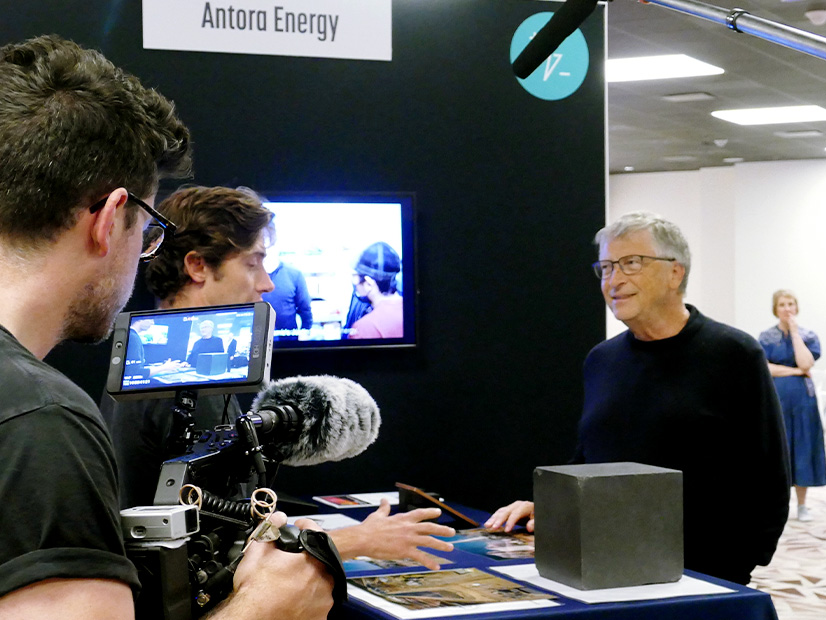Ohio lawmakers are raising concerns about how Illinois’ Climate and Equitable Jobs Act (CEJA) will impact their state’s ratepayers after PJM last year found that power plant retirements stemming from the law could require $2 billion in new transmission to maintain reliability.
Ohio House Public Utilities Committee Chair Dick Stein (R) and Senate Energy and Utility Committee Chair Bill Reineke (R), along with 10 other colleagues, sent a letter to PJM’s Board of Managers last month saying that while the RTO’s markets have done well for the state in the past, they were worried that could be changing.
“We are becoming increasingly concerned that the actions of PJM, FERC and other PJM states may jeopardize the successful, competitive market model that Ohio has nurtured,” the letter said. “We appreciate that PJM has brought concerns related to generation retirements and looming reliability challenges to our attention. Needless to say, we are quite concerned about reports that the PJM region is on the precipice of power shortages that could lead to blackouts for our consumers that need electricity.” (See PJM Chief: Retirements Need to Slow down.)
The legislators said those looming reliability issues are exacerbated by CEJA provisions that mandate closure of fossil fuel plants, which requires the phaseout of coal and natural gas units by specified dates starting in 2030, with the last plants to shut down in 2045. The law requires the Illinois government to collaborate with PJM and MISO starting in 2025 to analyze the impact of its provisions on reliability.
PJM has released a “very initial snapshot” of what the retirements could mean, including increased east-to-west power flows and up to $2 billion in transmission upgrades. That analysis did not include any of the new generation that CEJA incentives are expected to bring online. (See Illinois Climate Bill Could Force $2B in Tx Upgrades, PJM Says.)
Stein met with PJM after sending the letter, to which the RTO said in a statement it would formally respond soon.
“The loss of affordable and reliable coal and oil energy generation and the implementation of 100% renewables could potentially put a strain on the energy grid,” Stein said in a statement after the meeting. “Ohioans should not be burdened by cost increases that are caused by the policy choices of other states.”
The $2 billion is very preliminary, and now is the time for PJM, and the experts on the grid that it employs, to look into the issue more formally, former Illinois Commerce Commissioner Erin O’Connell Diaz said in an interview.
“It’s appropriate that the legislators of Ohio are concerned about it because there are a lot of costs that can flow out of different types of legislation,” said O’Connell-Diaz, who now runs consulting company FutureFWD.
While plant retirements generally create some new transmission costs, she said, ratepayers in Illinois and other states with similar clean energy policies are going to be paying to bring on clean energy, which will produce cheap power for the grid that Ohio will benefit from in the form of lower prices. The RTOs can quantify those kinds of benefits going forward as well, she said.
‘Shark-infested Waters’
The Natural Resources Defense Council supported CEJA, as it has similar laws in other states. Tom Rutigliano, of NRDC’s Sustainable FERC Project, argued that the Ohio legislators were mostly concerned about attacking renewables, but he also called for more coordination from the RTO.
“This letter is more focused on partisan, anti-renewable jabs than meaningful transmission or reliability solutions,” Rutigliano said in a statement. “Ohio officials’ efforts would be better directed toward following Illinois’s lead and working on collaborative, forward-looking reliability solutions, rather than attempting to close off their borders to clean, affordable energy. The request for further studies from PJM would be a distraction from what is needed to support a successful energy transition. Ultimately, this letter is a reminder that states need clear leadership, proactive planning and coordination from PJM.”
Former FERC Commissioner Tony Clark, a senior adviser at Wilkinson Barker Knauer, said such disputes among states have regularly come up and are likely to continue, especially in regions like PJM with varying energy policies. It is not ultimately feasible to isolate the impact of one state’s policies in regional markets, whether it is generation or (outside of the State Agreement Approach) transmission, he said.
“FERC has to allocate those costs based on court precedent with cost-causers and cost-payers being ‘roughly commensurate,’” Clark said. He said PJM’s strong minimum offer price rule (MOPR) represented “an attempt to try to isolate some of those costs, but the commission has backed off from that in recent years. It is, I think, taking a path where effectively the capacity markets are likely to wither a bit in terms of their revenue streams, and they seem to be more focused on trying to get more and more out of the energy and ancillary service markets. But even in those, you’re going to have spillover effects from any sort of market [or] public policy intervention in one state; it’s very hard to isolate it from others in an integrated market.”
If FERC had tried to keep the MOPR in place, states with strong clean energy policies would have pulled out of PJM and other markets, which put the federal regulator in a no-win situation in terms of market integrity, he added.
PJM states have been at odds over other issues in the past. A dispute over cost allocation more than a decade ago led to the “roughly commensurate” court precedent Clark cited. O’Connell-Diaz said she hoped for compromise on the dispute because any litigation would take years to resolve, and the industry needs to be focused on the reliable transition to a cleaner grid.
“But again, you put the overlay of the politics on it, and it’s shark-infested waters, isn’t it?” O’Connell-Diaz said. “And so, again, I go back to we really need to kind of wipe that away. You know, utility regulatory bodies should really have to be above all that that pressure. They need to be able to think clearly without any kind of political connotations.”
However, that is not an easy thing to do today, she added.


